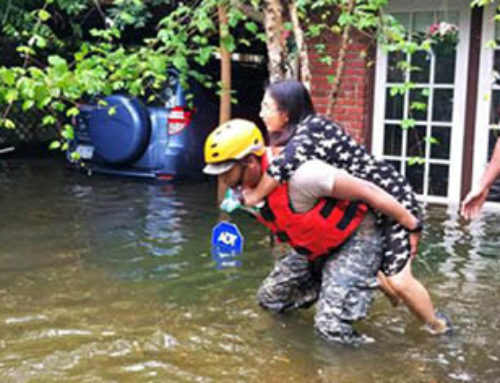Late on September 26, Category 4 Hurricane Helene made landfall in Florida’s Big Bend region with devastating force. The storm continued moving across the Southeast, resulting in the tragic loss of over 200 lives across multiple states. While coastal areas were severely affected, the storm’s most pronounced impacts occurred inland, with widespread flooding across Southern Appalachia.
This disaster underscores the growing vulnerability of property and infrastructure to climate change and the urgency of needed reforms. Both private insurers and federal programs, such as the National Flood Insurance Program (NFIP), must not only update their risk models but also implement changes—such as reducing cross-subsidies, expanding coverage requirements, addressing residual risk properties, and improving flood mapping technologies—to better respond to the increasing unpredictability and unpredictability of severe weather events.
The Federal Response So Far
Even before Helene made landfall, President Biden issued an emergency declaration for Florida, enabling federal support for state evacuation, shelter, and care efforts. Additional emergency declarations followed for Alabama, Georgia, South Carolina, North Carolina, Tennessee, and Virginia as the hurricane approached. The National Oceanic and Atmospheric Administration (NOAA) issued hurricane warnings along the Gulf Coast and extended flood warnings into these states.
Federal Emergency Management Agency (FEMA) teams mobilized, distributing food and water, restoring communications, and coordinating damage assessments with state emergency management. The Coast Guard and National Guard units from ten states were deployed for search and rescue operations and aid distribution in the affected areas. As damage assessments continue, the federal government is expected to provide ongoing funding and direct aid to support recovery efforts.
Cost Estimates
While the response to Helene is still in its early stages, it’s clear that the storm’s financial toll will be massive. CoreLogic, a property intelligence firm, estimates insured losses from wind and storm surge to be between $3 billion and $5 billion, excluding inland flooding damages. Moody’s estimates total property damage costs between $15 billion and $26 billion, with a total storm cost ranging from $20 billion to $34 billion. AccuWeather places combined damage and economic losses between $145 billion and $160 billion. If these numbers hold, Helene will rank among the top two or three most expensive natural disasters in U.S. history, potentially surpassing the inflation-adjusted $155 billion cost of Hurricane Harvey in 2017 for the second spot after 2005’s Hurricane Katrina.
Complicating the recovery, much of the severe flooding occurred in areas with minimal perceived flood risk by the public. For example, in Asheville, North Carolina, flood risk assessments suggested a 0.2% annual risk (a 500-year flood event), well below the 1% (100-year) that mandates flood insurance for properties with federally backed mortgages. Asheville had just 447 flood insurance policies in force, protecting only $152 million in property, compared to the city’s nearly 40,000 households. The disproportionate number of policies to households underscores the unexpected nature of the disaster and the financial vulnerabilities exposed by climate change. However, it also demonstrates a failure to communicate risk adequately. Homeowners often see the mandatory purchase requirement as a binary situation – if you are required to purchase flood insurance, then you need it; if you’re not required, then you don’t. There is always flood risk; insurance products should be marketed and priced to reflect that risk.
Reforms Needed
As we face growing risks driven by climate change, it is clear that reforms are needed in disaster recovery and how we assess and mitigate those risks before disaster strikes. The current approach—largely reactive and reliant on outdated models—must shift toward proactive resilience planning, improved risk assessment, and fairer insurance practices that protect taxpayers and property owners. In this light, several vital reforms should be considered to address these pressing issues and build a more resilient future.
- Eliminate Cross-Subsidies to Reflect True Risk: The NFIP has historically included cross-subsidies, which lower premiums for certain properties, such as those “grandfathered” at older rates or located in specific zones. While these subsidies make insurance more affordable for some, they can lead to economic inefficiencies and discourage property owners from investing in mitigation measures. FEMA’s Risk Rating 2.0 which prices individual properties according to risk should eventually reduce some of the impacts of grandfathering but they will remain for years to come. Further, the use of Replacement Cost Value (RCV) in setting NFIP rates has been proposed to reduce these cross-subsidies and better reflect the true risk to policyholders.
- Expand the Mandatory Purchase Requirement: Currently, the mandatory purchase requirement for flood insurance applies only to properties within 100-year floodplains that have federally backed mortgages. This requirement is not always enforced and does not extend to all properties at risk of flooding, such as those less – but still risky – flood zones or residences without mortgages. Expanding this requirement could increase participation in the NFIP and reduce federal disaster assistance expenditures. The Government Accountability Office (GAO) has recommended that FEMA evaluate how new flood risk information could be used to update this requirement.
- Require Insurance for Residual Risk Properties: Properties benefiting from flood protection measures, such as levees or dams, that provide greater than 100-year protection are exempt from the mandatory purchase requirement. Besides, creating an incentive for low levels of flood protection, this exemption can create a false sense of security and leave these properties vulnerable if protective measures fail. Including these residual risk properties in the mandatory purchase requirement would ensure broader coverage and better preparedness for unexpected flooding events. Rates would reflect the relative level of protection.
- Implement Advanced Flood Mapping Technologies: Accurate flood risk assessment is critical for effective floodplain management and insurance pricing. Traditional flood maps may not reflect current risks due to outdated data or changes in land use. Implementing Light Detection and Ranging (LiDAR) technology for mapping can provide high-resolution data that more accurately represents flood risks. This would allow for more precise delineation of flood zones and inform both policyholders and insurers about potential hazards.
Implications for Climate Risk and Insurance Markets
FEMA’s Disaster Relief Fund (DRF), which has faced perennial budget shortfalls, received $20 billion in the recent Continuing Resolution to keep government operating at FY2024 levels. Absent other large disasters, this funding is expected to last through January. But Helene’s impact may require a supplemental spending package from Congress after the November elections or sooner. Without additional funds, FEMA could be forced to prioritize only the most critical, life-sustaining services. These estimates also assume that no further natural disasters will increase the need for additional federal spending.
This storm adds to the mounting evidence that better disaster planning is needed to ensure FEMA can effectively carry out its mission. As climate change drives up the frequency and severity of natural disasters, the federal government must budget more accurately for future events. Updating programs like the NFIP to better meet the needs of at-risk communities is essential. As Helene shows, what were once considered rare, thousand-year storms are becoming more frequent, largely due to climate change. Congress has the opportunity to act, but the political will must follow.
What lessons can be learned so far?
In the aftermath of natural disasters, immediate relief efforts are crucial, but so too is learning from the event to prevent similar outcomes in the future. For man-made disasters, like the East Palestine train derailment or the Key Bridge collapse in Baltimore, the National Transportation Safety Board (NTSB) investigates and produces recommendations for prevention. While natural disasters cannot be entirely prevented, there are always lessons to be learned and mitigation efforts that can lessen future impacts. For this reason, TCS advocates for an NTSB-like organization for natural disasters, such as the one proposed in recent legislation by Rep. Katie Porter (D-CA). Such an agency would help the federal government learn from natural disasters and better allocate resources to mitigate the worst effects of future storms.
As storms like Helene grow in power, mitigation and resilience efforts will be crucial for federal response strategies. A recent Congressional Budget Office (CBO) report found that every $1 invested in the U.S. Army Corps of Engineers and FEMA now saves between $2 and $6 in future spending over the next 50 years. In the case of Helene, which caused most of its damage through flooding, such mitigation efforts could have been invaluable. Reforming programs like the NFIP will better protect homeowners and taxpayers from hurricanes and floods. As NFIP is up for Congressional reauthorization, TCS continues to advocate for reforms such as refining Risk Rating 2.0, increasing participation, and enhancing resilience spending.










Get Social